Study on Physical Properties and Bearing Capacity of Quaternary Residual Sand for Building Foundations: A Case Study of Beaches in Quanzhou, China
Abstract
1. Introduction
2. Overview of the Study Area
3. Test Methods
3.1. Foundation Bearing Capacity Test
3.2. Water Content Test
3.3. Particle Size Distribution Test
3.4. Relative Density Test
3.5. Liquid and Plastic Limit Tests
3.6. Consolidation Test
3.7. Triaxial Shear Test
4. Analysis of Test Results
4.1. Physical and Mechanical Properties
- (1)
- Bearing Capacity and Water Content Characteristics of Sandy Soils at Different Beach Locations.
- (2)
- Particle Gradation Characteristics of Sandy Soils at Different Beach Locations.
- (3)
- Relative Density Characteristics of Sandy Soils at Different Beach Locations.
- (4)
- Liquid Limit and Plastic Limit Characteristics of Sandy Soils at Different Beach Locations.
- (5)
- Compression Modulus Characteristics of Sandy Soils at Different Beach Locations.
- (6)
- Shear Strength Characteristics of Sandy Soils at Different Beach Locations
4.2. Correlation Between Bearing Capacity and Physical–Mechanical Indices
5. Mathematical Model of Foundation Bearing Capacity
5.1. Establishment of the Model
5.2. Validation of the Model
6. Conclusions
- (1)
- Sandy soils in the coastal zone of Quanzhou, China, are influenced by tides, biogenic debris, and salinity, exhibiting poor gradation (Cu = 1.5–2.269), low density (relative density 33–35%), high water sensitivity (21.71–28.12%), and non-cohesiveness (cohesion = 0). Regional differences are notable: Shenhu Bay sands are dominated by finer, angular particles with stronger interparticle interlocking, while Qingshan Bay sands contain more coarse particles with better gradation uniformity. The average internal friction angle differs by 3.36°, leading to an 18.2% difference in the foundation bearing capacity, highlighting the impact of marine dynamics and sedimentary environments on soil properties.
- (2)
- Under unsaturated conditions (water content < 34%), the bearing capacity of sandy soil shows nonlinear growth with increasing water content. When the water content rises from 17.8% to 31.92%, the bearing capacity increases by 12.15%. This is closely related to the redistribution of pore water and changes in stress at particle contacts, which influence shear strength. The positive correlation (r = 0.46–0.47) between gradation parameters (Cu, Cc) and bearing capacity indicates that gradation-induced differences in particle compactness are key factors affecting water–strength interactions.
- (3)
- Considering the non-cohesiveness of coastal sandy soils, the classical L. Prandtl–Reissner model was modified. By fitting triaxial test data, relationships were established between the internal friction angle, water content, and gradation. The proposed bearing capacity model, validated by 123 groups of in situ dynamic penetration tests, achieves an average error of about 15%, outperforming traditional models such as the Terzaghi (overestimation) and Hansen (underestimation) models. In poorly graded sands, prediction accuracy is improved by over 30%, enabling the rapid determination of beach foundation capacity and providing theoretical support for coastal engineering design.
- (4)
- The model is mainly applicable to static loading conditions not only in Quanzhou beach sands, but also on the southeast coast of China, without considering salt–pore water interactions or complex dynamic loads (e.g., earthquakes and cyclic waves). Future research should focus on quantifying salinity–water coupling effects, investigating sandy soil behavior under cyclic and dynamic loading, and extending model validation to other coastal regions to enhance its applicability and engineering value.
Author Contributions
Funding
Data Availability Statement
Conflicts of Interest
References
- Liu, J.; Kuang, W.; Zhang, Z.; Xu, X.; Qin, Y.; Ning, J.; Zhou, W.; Zhang, S.; Li, R.; Yan, C.; et al. Spatiotemporal characteristics, patterns, and causes of land-use changes in China since the late 1980s. J. Geogr. Sci. 2014, 24, 195–210. [Google Scholar] [CrossRef]
- Wei, B.; Li, Y.; Suo, A.; Zhang, Z.; Xu, Y.; Chen, Y. Spatial suitability evaluation of coastal zone, and zoning optimisation in ningbo, China. Ocean Coast. Manag. 2021, 204, 105507. [Google Scholar] [CrossRef]
- Xiao, X.; Li, Y.; Shu, F.; Wang, L.; He, J.; Zou, X.; Chi, W.; Lin, Y.; Zheng, B. Coupling relationship of human activity and geographical environment in stage-specific development of urban coastal zone: A case study of Quanzhou Bay, China (1954–2020). Front. Mar. Sci. 2022, 8, 781910. [Google Scholar] [CrossRef]
- Miura, K.; Maeda, K.; Furukawa, M.; Toki, S. Physical characteristics of sands with different primary properties. Soils Found. 1997, 37, 53–64. [Google Scholar] [CrossRef]
- Xu, Y.Q.; Li, P.Y.; Li, P.; Liu, L.J.; Cao, C.X.; Feng, X.L. Physical and mechanical properties of fine-grained soil in the Zhejiang-Fujian coastal area, China. Mar. Georesources Geotechnol. 2011, 29, 333–345. [Google Scholar] [CrossRef]
- Shen, Y.; Zhu, Y.; Liu, H.; Li, H.; Ge, H. Macro-meso effects of gradation and particle morphology on the compressibility characteristics of calcareous sand. Bull. Eng. Geol. Environ. 2018, 77, 1047–1055. [Google Scholar] [CrossRef]
- Liang, K.; Chen, G.; Du, X.; Xu, C.; Yang, J. A unified formula for small-strain shear modulus of sandy soils based on extreme void ratios. J. Geotech. Geoenviron. Eng. 2023, 149, 04022127. [Google Scholar] [CrossRef]
- Hentschel, M.L.; Page, N.W. Selection of descriptors for particle shape characterization. Part. Part. Syst. Charact. 2003, 20, 25–38. [Google Scholar] [CrossRef]
- Wang, Q.; Chen, G. The Bedrock and earth works of compacted powder land in coastal areas. J. Coast. Res. 2020, 112, 371–374. [Google Scholar] [CrossRef]
- Du, J.; Jiang, X.; Liu, B.; Li, T.; Jiang, N. Dynamic modulus and damping ratio of organic-matter-disseminated sand under cyclic triaxial condition. Soils Found. 2025, 65, 101616. [Google Scholar] [CrossRef]
- Jiang, Q.; Huang, M.; Xu, K.; Cui, M. Statistical Damage Constitutive Model of Micp-Treated Calcareous Sand. J. Eng. Geol. 2024, 32, 1526–1535. [Google Scholar]
- Abedi, S.; Mirghasemi, A.A. Particle shape consideration in numerical simulation of assemblies of irregularly shaped particles. Particuology 2011, 9, 387–397. [Google Scholar] [CrossRef]
- Hosseininia, E.S. Discrete element modeling of inherently anisotropic granular assemblies with polygonal particles. Particuology 2012, 10, 542–552. [Google Scholar] [CrossRef]
- Shan, S.; Pei, X.; Zhan, W. Estimating deformation modulus and bearing capacity of deep soils from dynamic penetration test. Adv. Civ. Eng. 2021, 2021, 1082050. [Google Scholar] [CrossRef]
- Yang, S.; Shen, Y.; Zhang, L. Influence of particle morphology on bearing capacity of coral sand foundations. J. Geotech. Geoenviron. Eng. 2021, 147, 04021076. [Google Scholar]
- Yuliet, R.; Pratama, A.; Sugiyanto, S. Characterization of coastal sands in Padang: Implications for liquefaction and bearing capacity. Geotech. Geol. Eng. 2023, 41, 987–1002. [Google Scholar]
- Shinohara, K.; Oida, M.; Golman, B. Effect of particle shape on angle of internal friction by triaxial compression test. Powder Technol. 2000, 107, 131–136. [Google Scholar] [CrossRef]
- Terzaghi, K. Theoretical Soil Mechanics; Wiley: Hoboken, NJ, USA, 1943. [Google Scholar]
- Vesic, A.S. Analysis of ultimate loads of shallow foundations: Closure of discussion of original paper J. Soil Mech. Found. Div. Jan. 1973. 1F, 6R. J. GEOTECH. ENGNG. DIV. V100, N. GT8, 1974, P949–951. Int. J. Rock Mech. Min. Sci. Geomech. Abstr. 1974, 11, A230. [Google Scholar] [CrossRef]
- Bolton, M.D. Discussion: The strength and dilatancy of sands. Géotechnique 1987, 37, 219–226. [Google Scholar] [CrossRef]
- Janabi, F.H.; Raja, R.A.; Sakleshpur, V.A.; Prezzi, M.; Salgado, R. Experimental study of shape and depth factors and deformations of footings in sand. J. Geotech. Geoenviron. Eng. 2023, 149, 04022128. [Google Scholar] [CrossRef]
- Vanapalli, S.K.; Mohamed, F.M.O. Bearing capacity of model footings in unsaturated soils. In Experimental Unsaturated Soil Mechanics; Springer: Berlin/Heidelberg, Germany, 2007; pp. 483–493. [Google Scholar]
- Mujtaba, H.; Farooq, K.; Sivakugan, N.; Das, B.M. Evaluation of relative density and friction angle based on SPT-N values. KSCE J. Civ. Eng. 2018, 22, 572–581. [Google Scholar] [CrossRef]
- Raja, R.A.; Sakleshpur, V.A.; Prezzi, M.; Salgado, R. Effect of relative density and particle morphology on the bearing capacity and collapse mechanism of strip footings in sand. J. Geotech. Geoenviron. Eng. 2023, 149, 04023052. [Google Scholar] [CrossRef]
- Liu, M.D.; Carter, J.P. Virgin compression of structured soils. Géotechnique 1999, 49, 43–57. [Google Scholar] [CrossRef]
- Seed, H.B.; Idriss, I.M. Simplified procedure for evaluating soil liquefaction potential. J. Soil Mech. Found. Div. 1971, 97, 1249–1273. [Google Scholar] [CrossRef]
- Nguyen, D.L.; Ohtsuka, S.; Hoshina, T.; Isobe, K. Discussion on size effect of footing in ultimate bearing capacity of sandy soil using rigid plastic finite element method. Soils Found. 2016, 56, 93–103. [Google Scholar] [CrossRef]
- Raja, R.A.; Sakleshpur, V.A.; Prezzi, M.; Salgado, R. Load response and soil displacement field for a vertically loaded strip footing on sand underlain by a stiff base. J. Geotech. Geoenviron. Eng. 2023, 149, 04023106. [Google Scholar] [CrossRef]
- Cao, Z.; Youd, T.L.; Yuan, X. Chinese dynamic penetration test for liquefaction evaluation in gravelly soils. J. Geotech. Geoenviron. Eng. 2013, 139, 1320–1333. [Google Scholar] [CrossRef]
- Issam Mohamed Abdelhamid, M.; Gabr, A.K.; Mehdi, H.A.; Arab, M. Correlating physical and mechanical properties of soil with dynamic penetration tests. J. Al-Azhar Univ. Eng. Sect. 2022, 17, 512–527. [Google Scholar] [CrossRef]
- Vangla, P.; Gali, M.L. Effect of particle size of sand and surface asperities of reinforcement on their interface shear behavior. Geotext. Geomembr. 2016, 44, 254–268. [Google Scholar] [CrossRef]
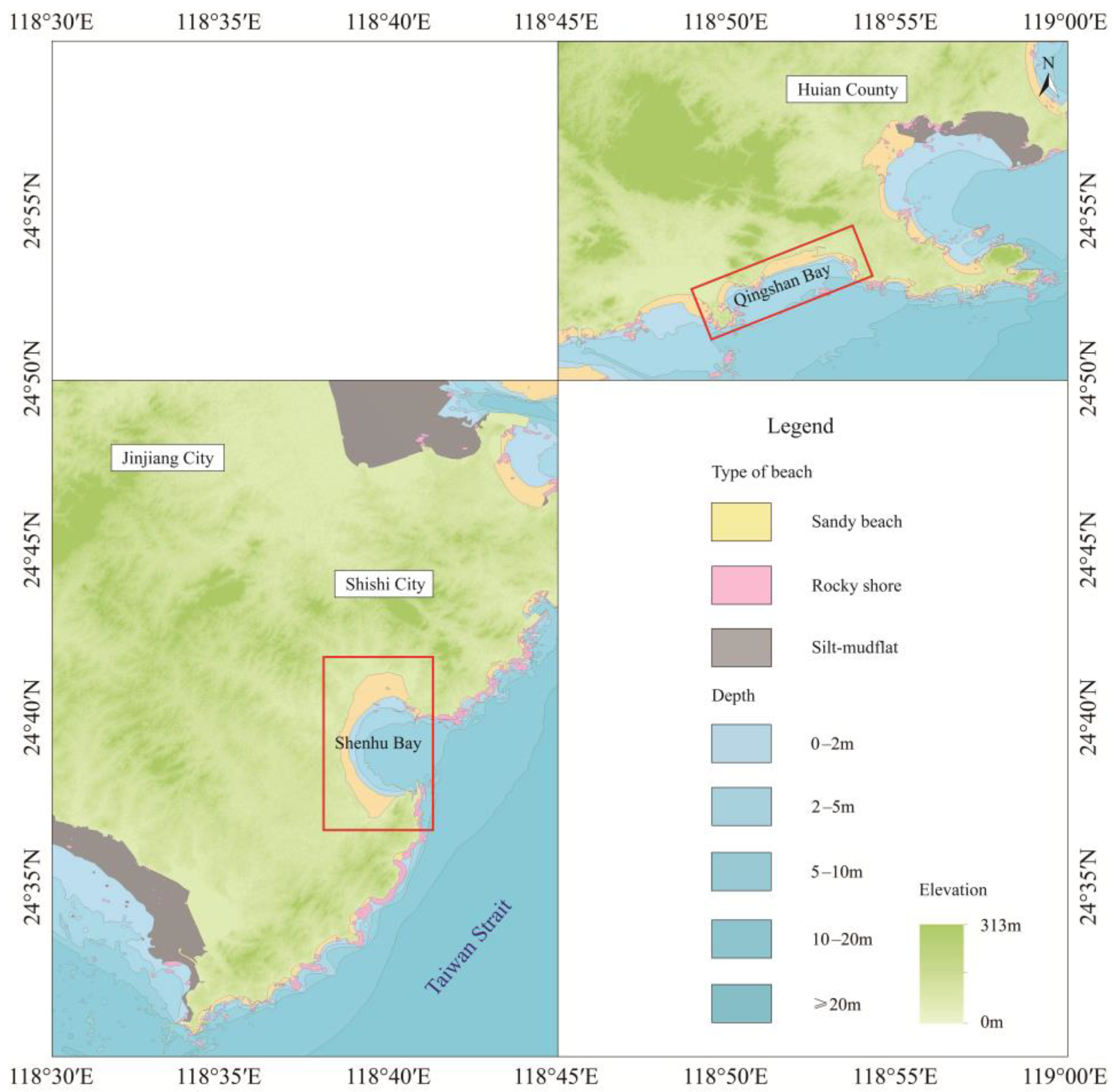

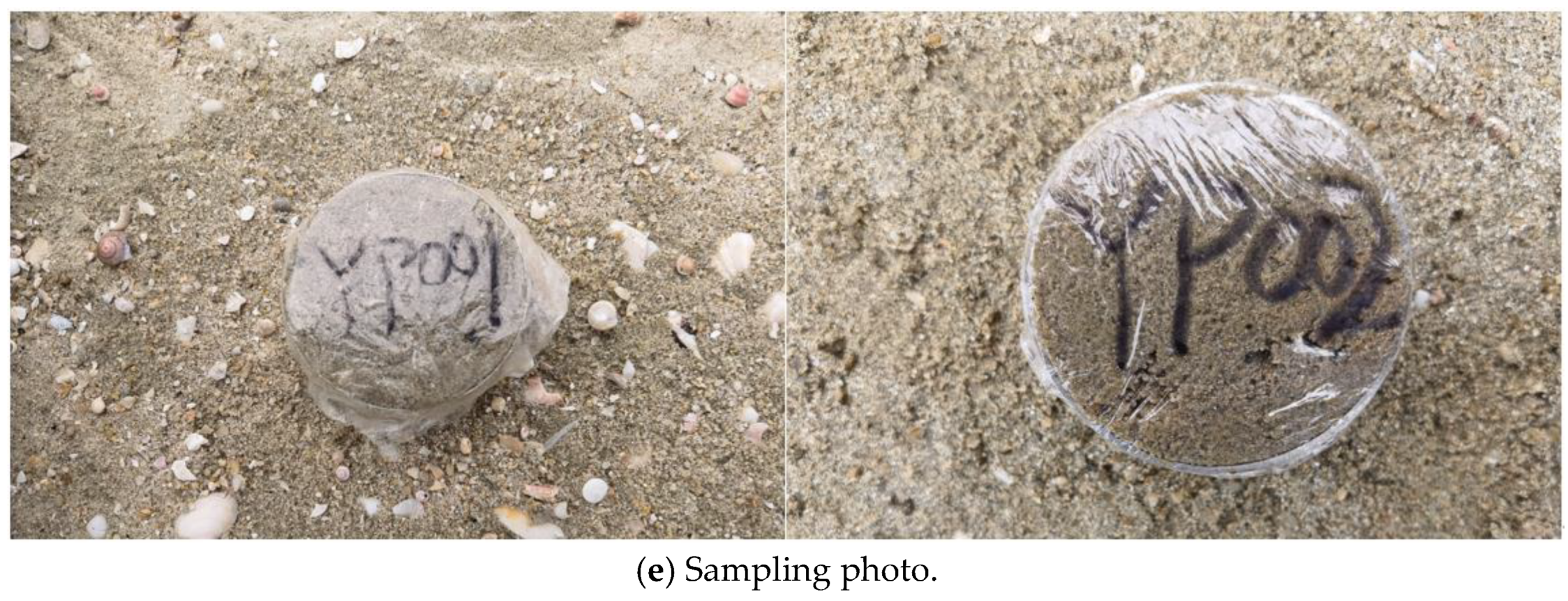

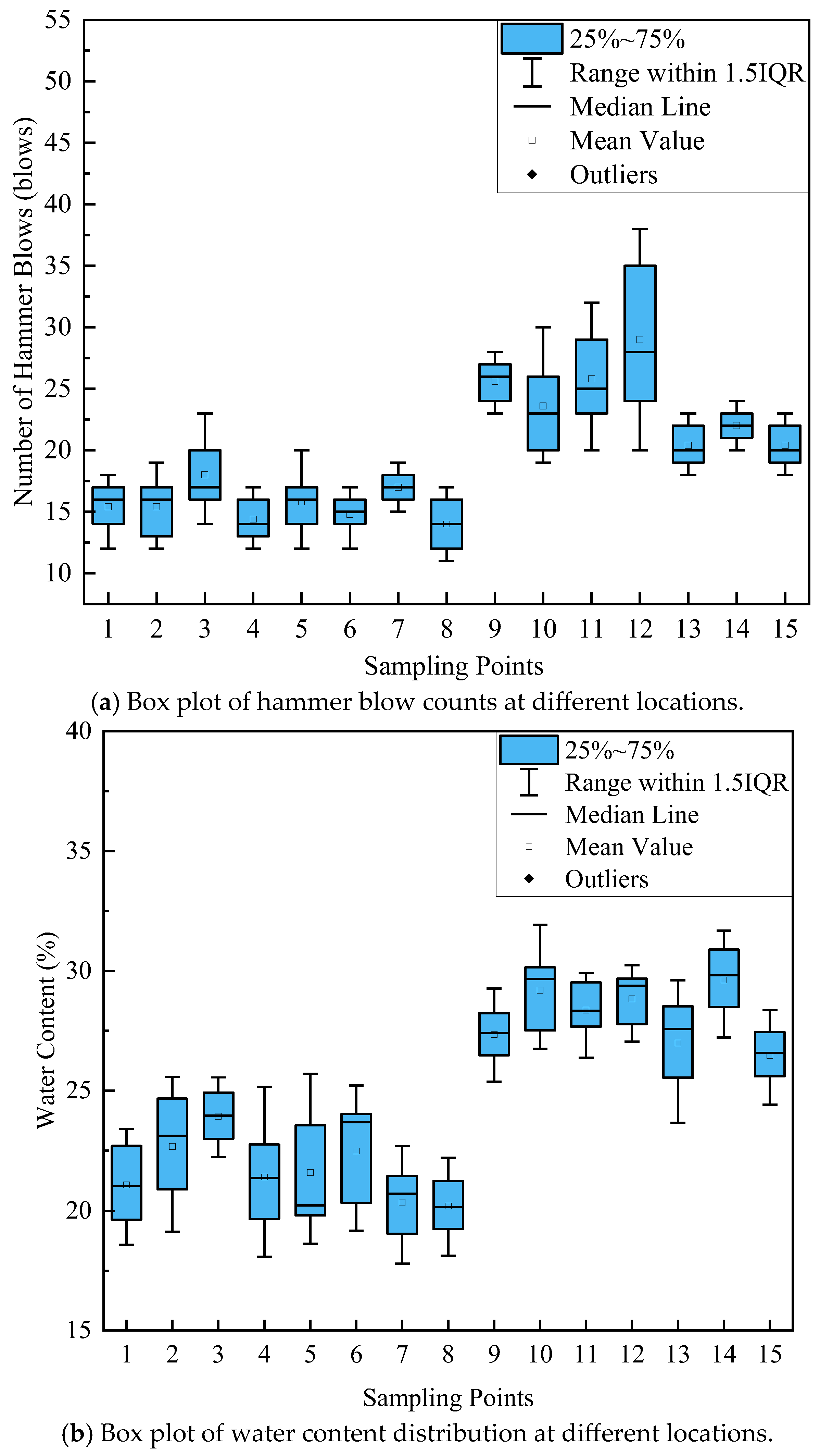
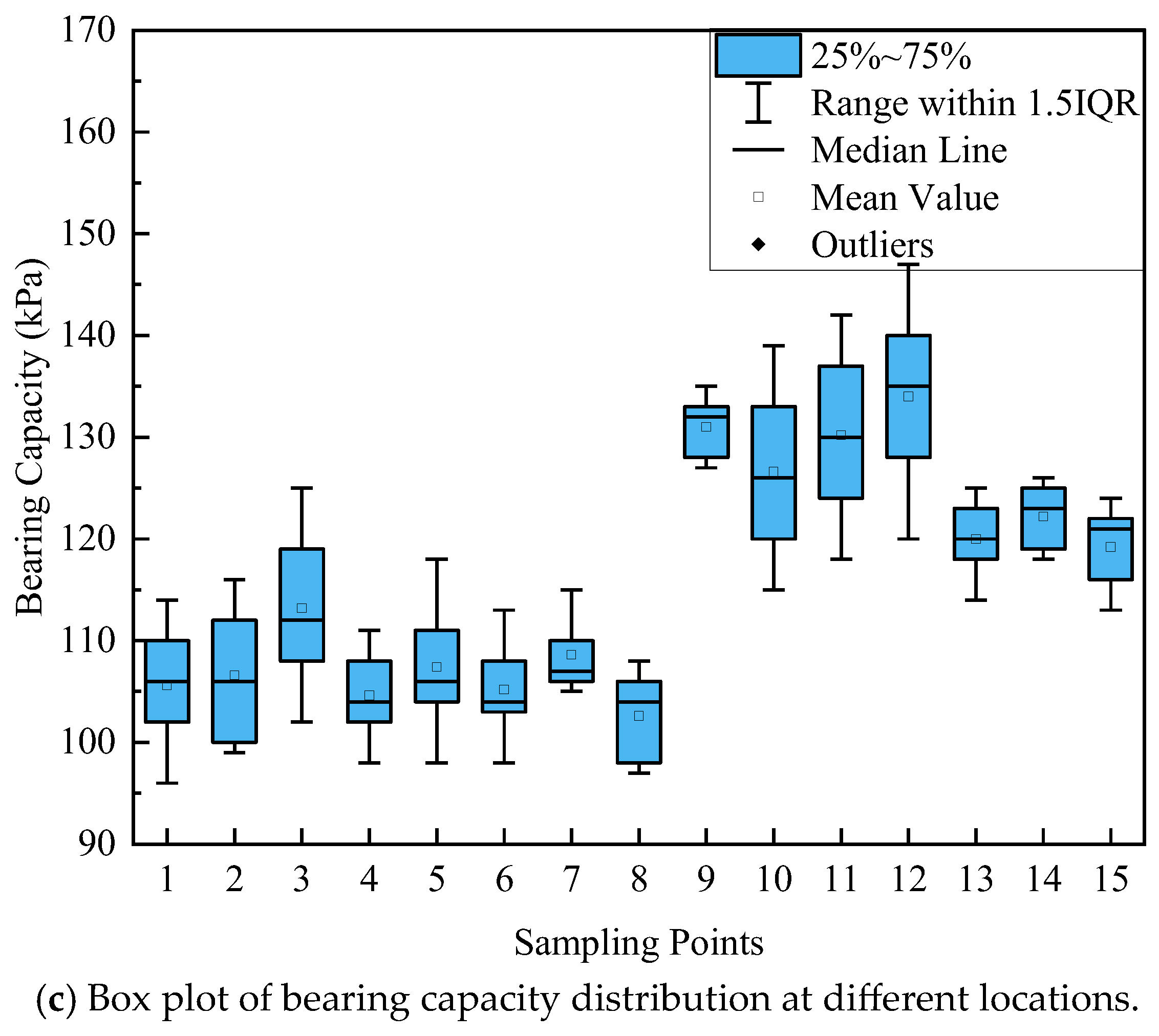

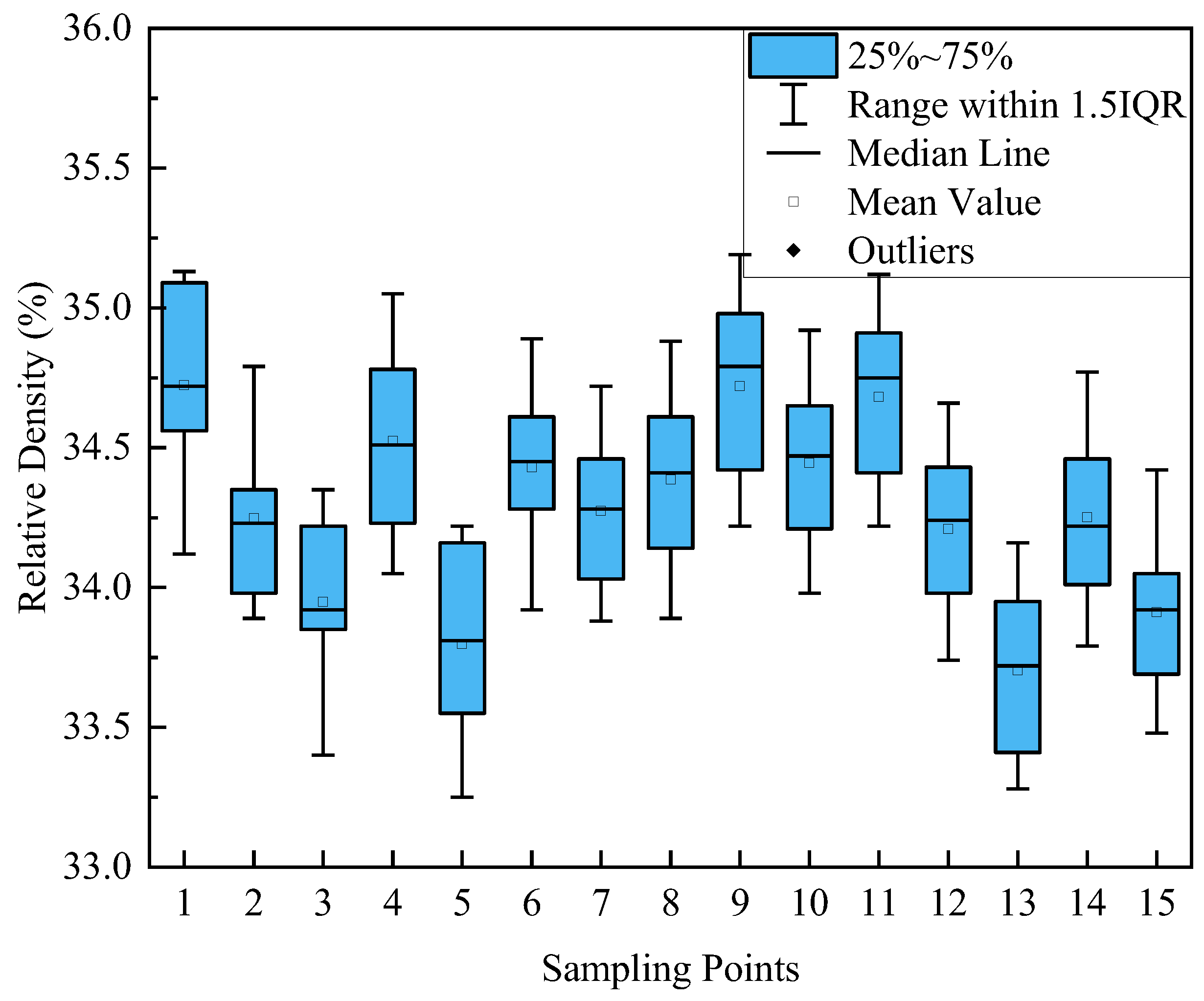

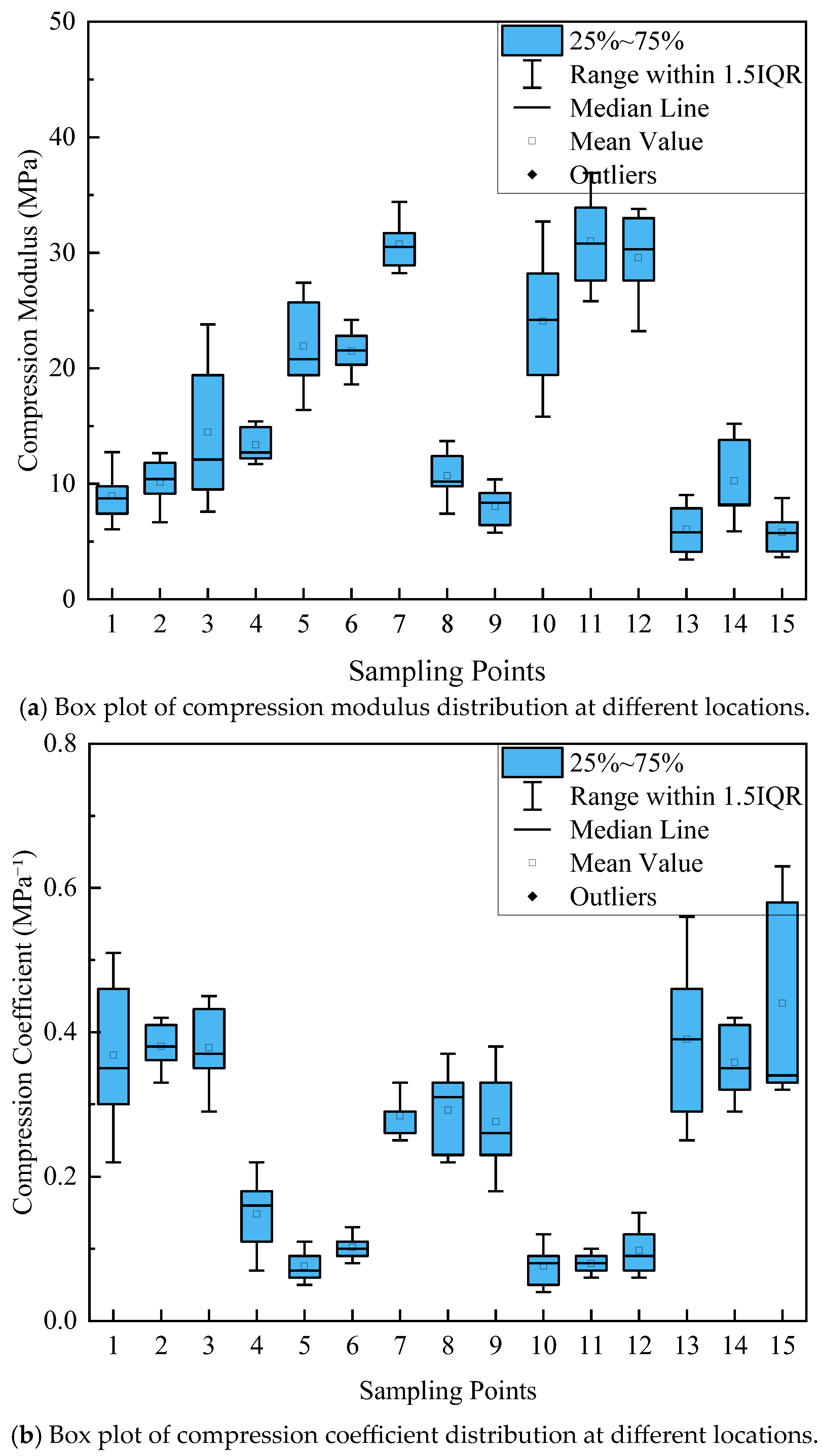
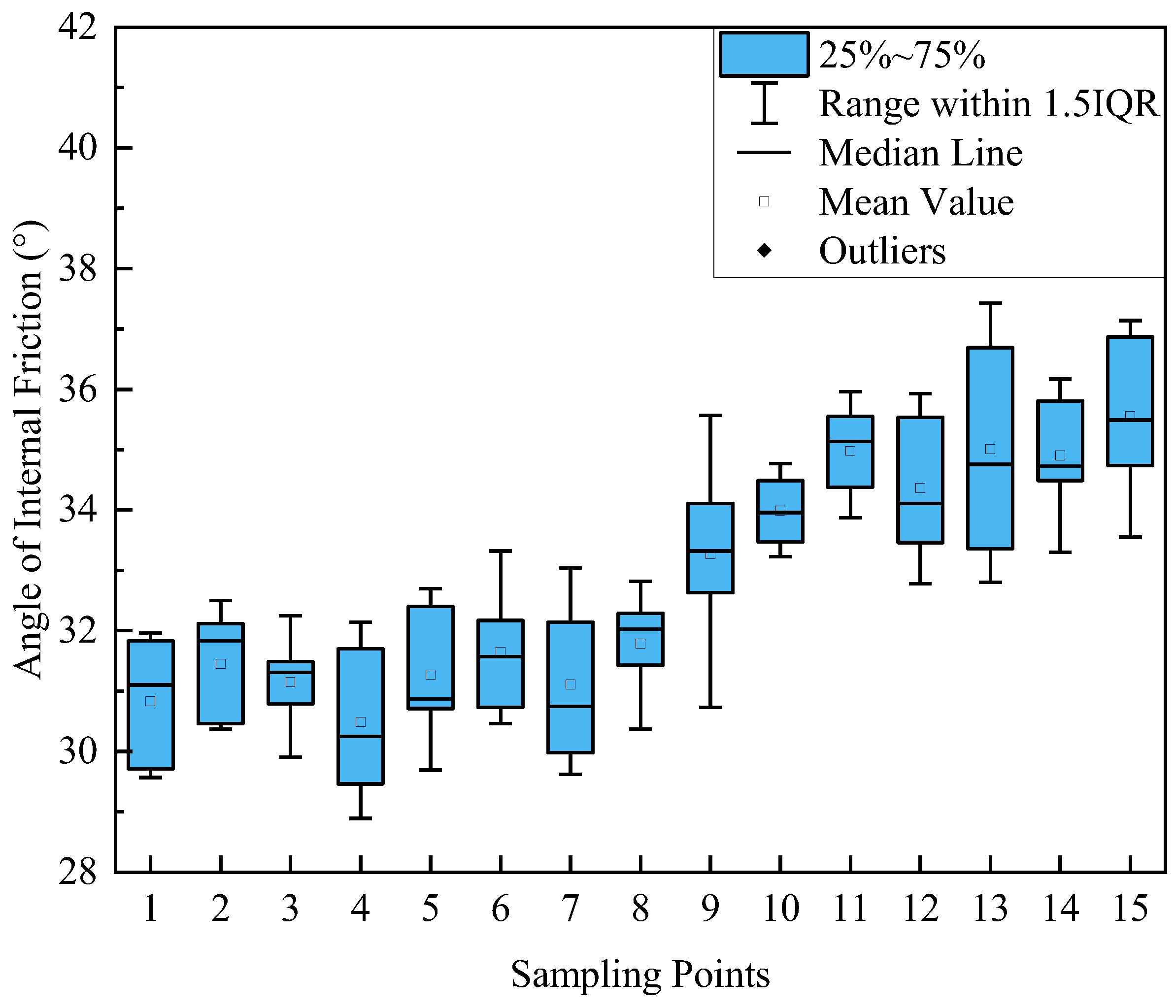
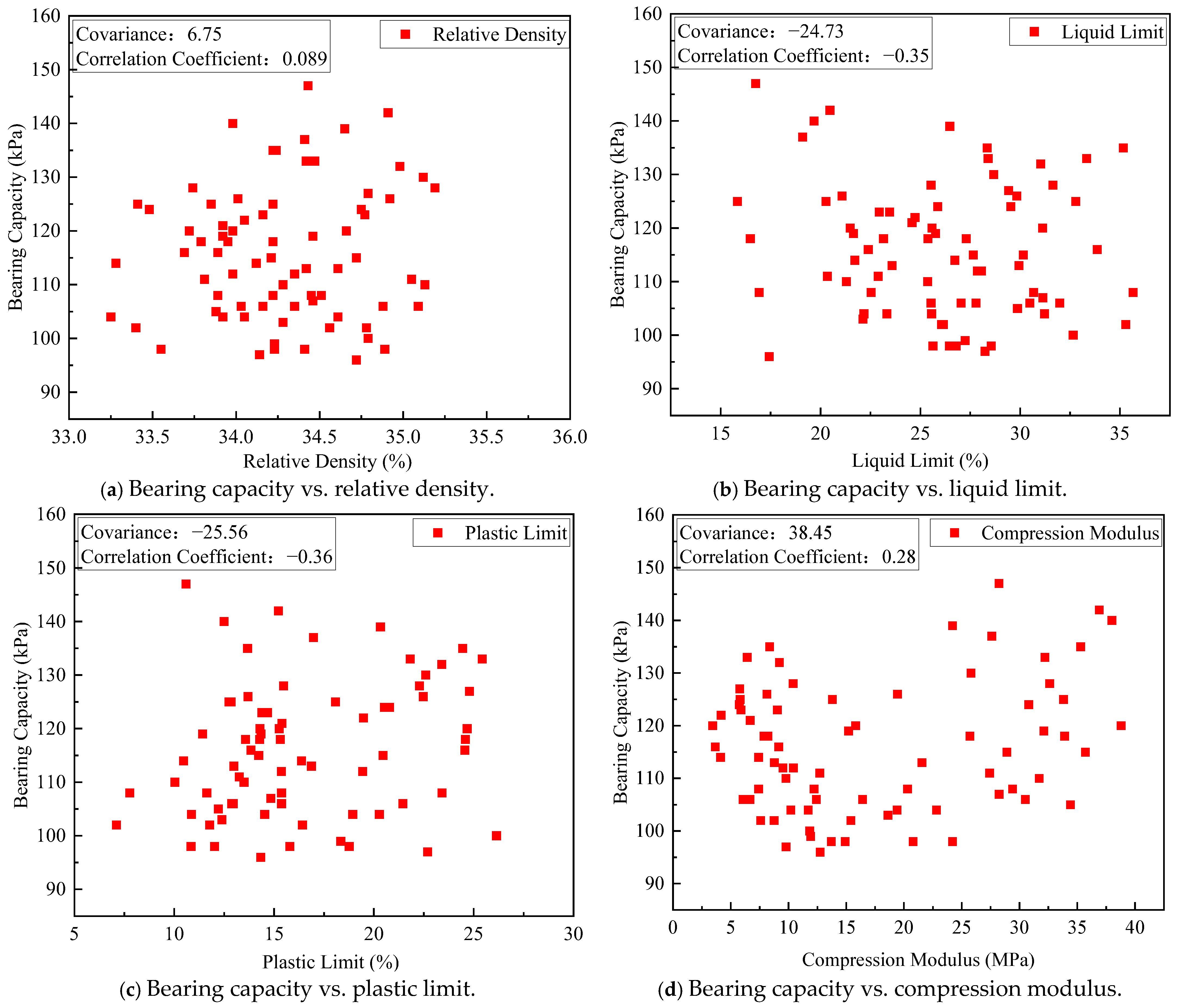
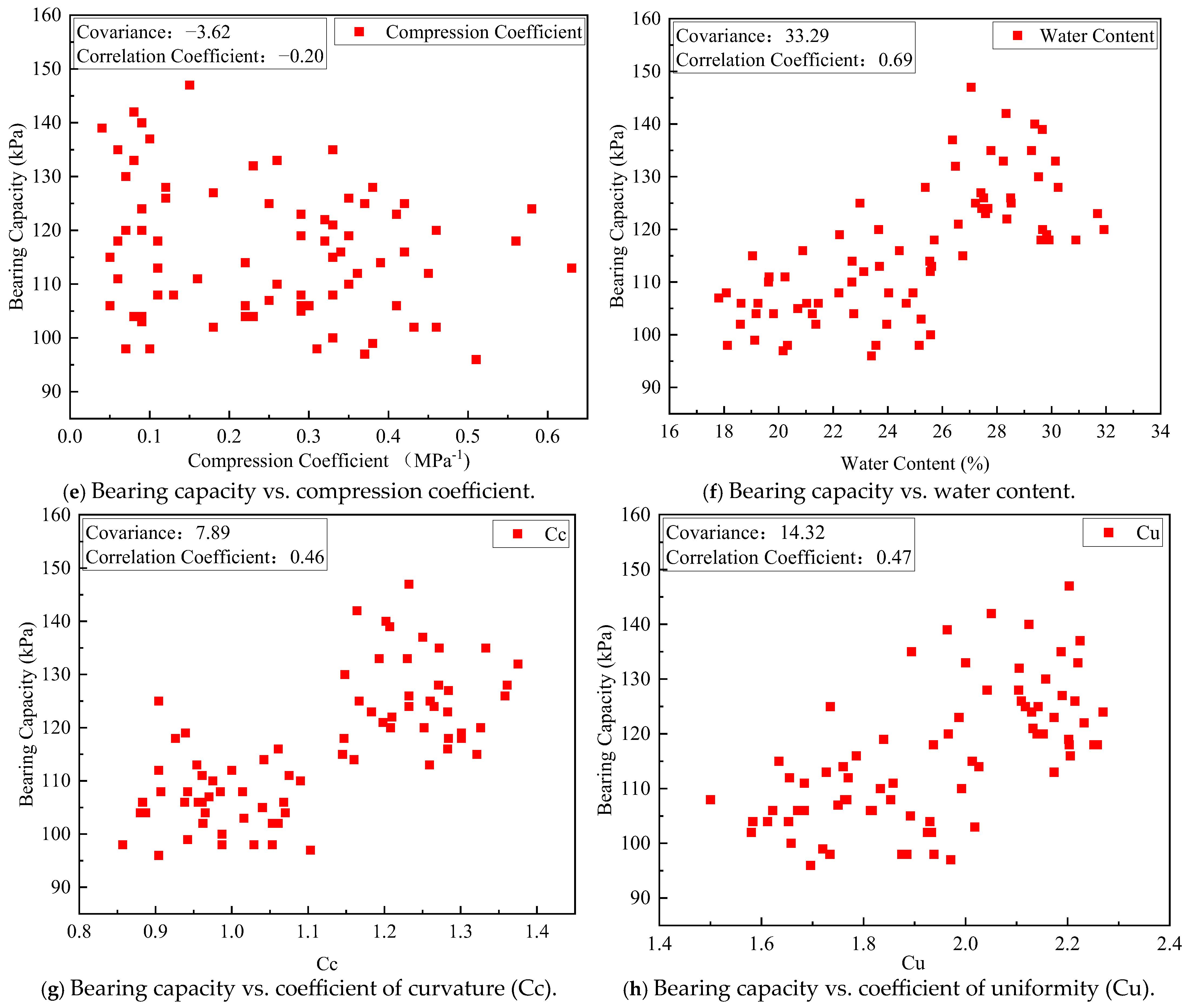
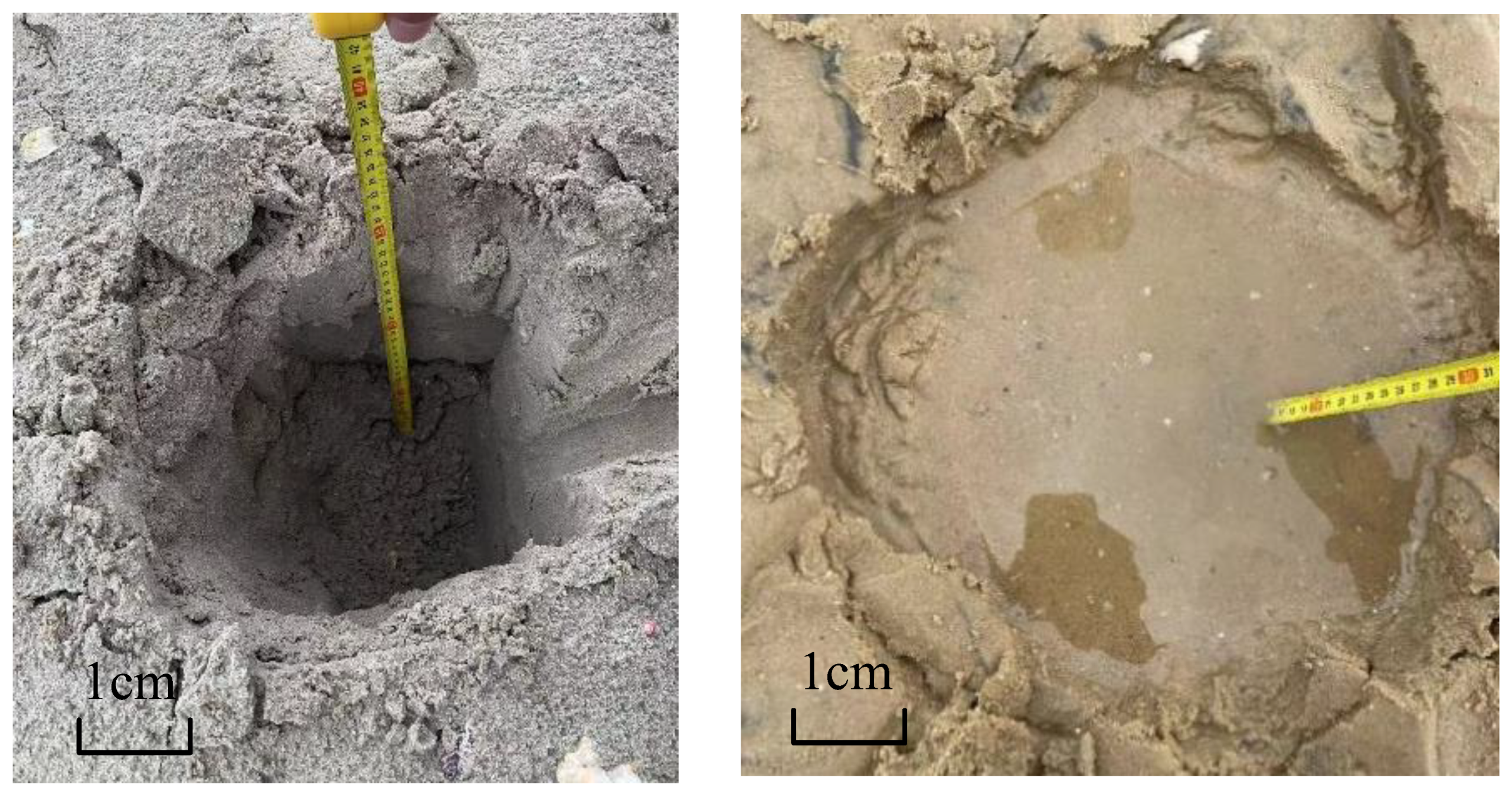
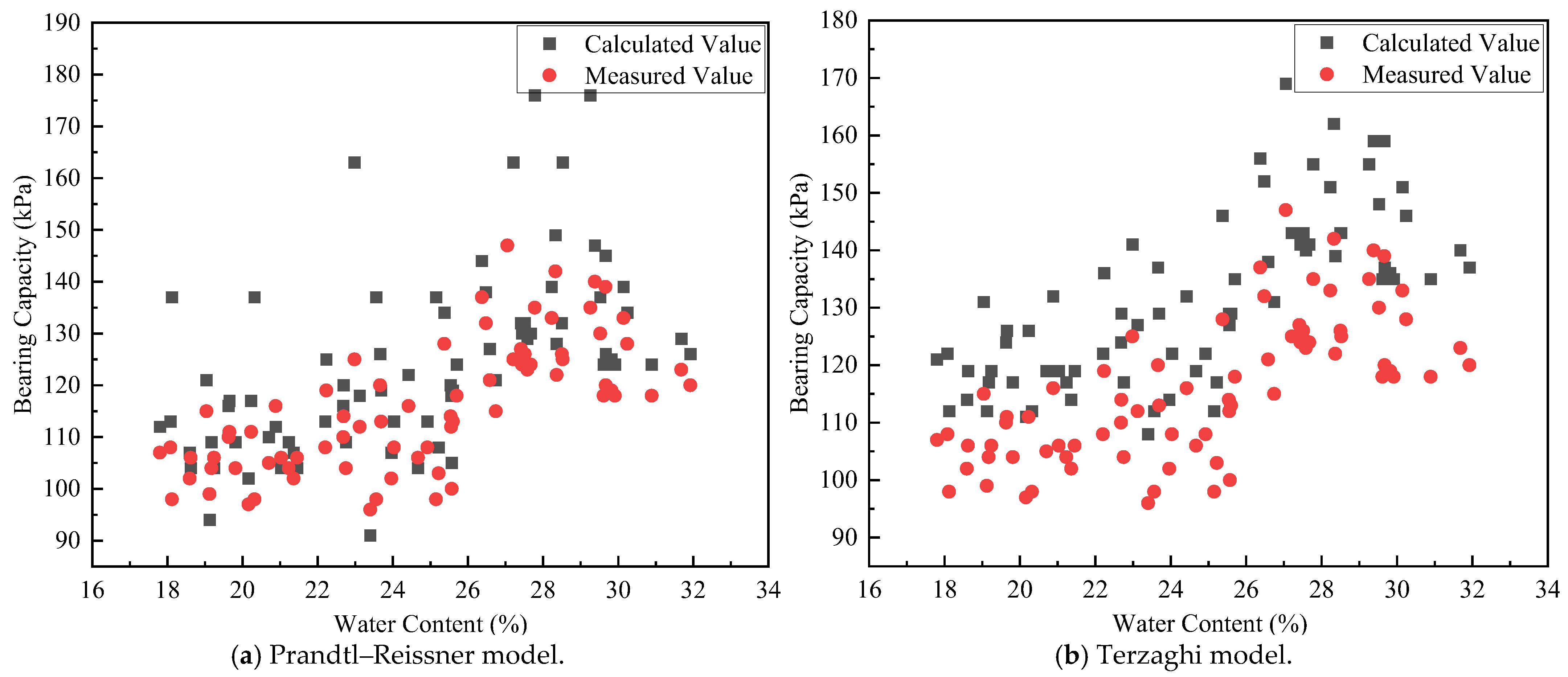
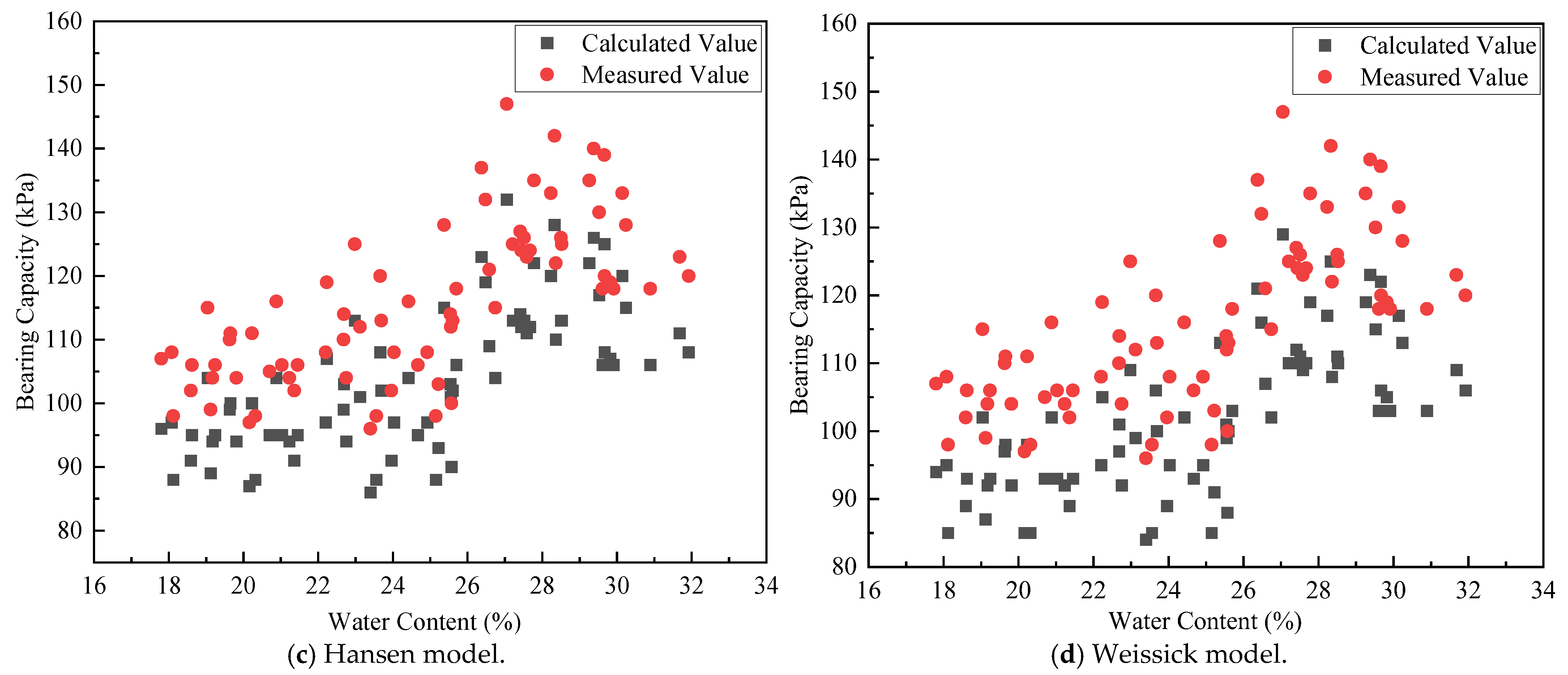
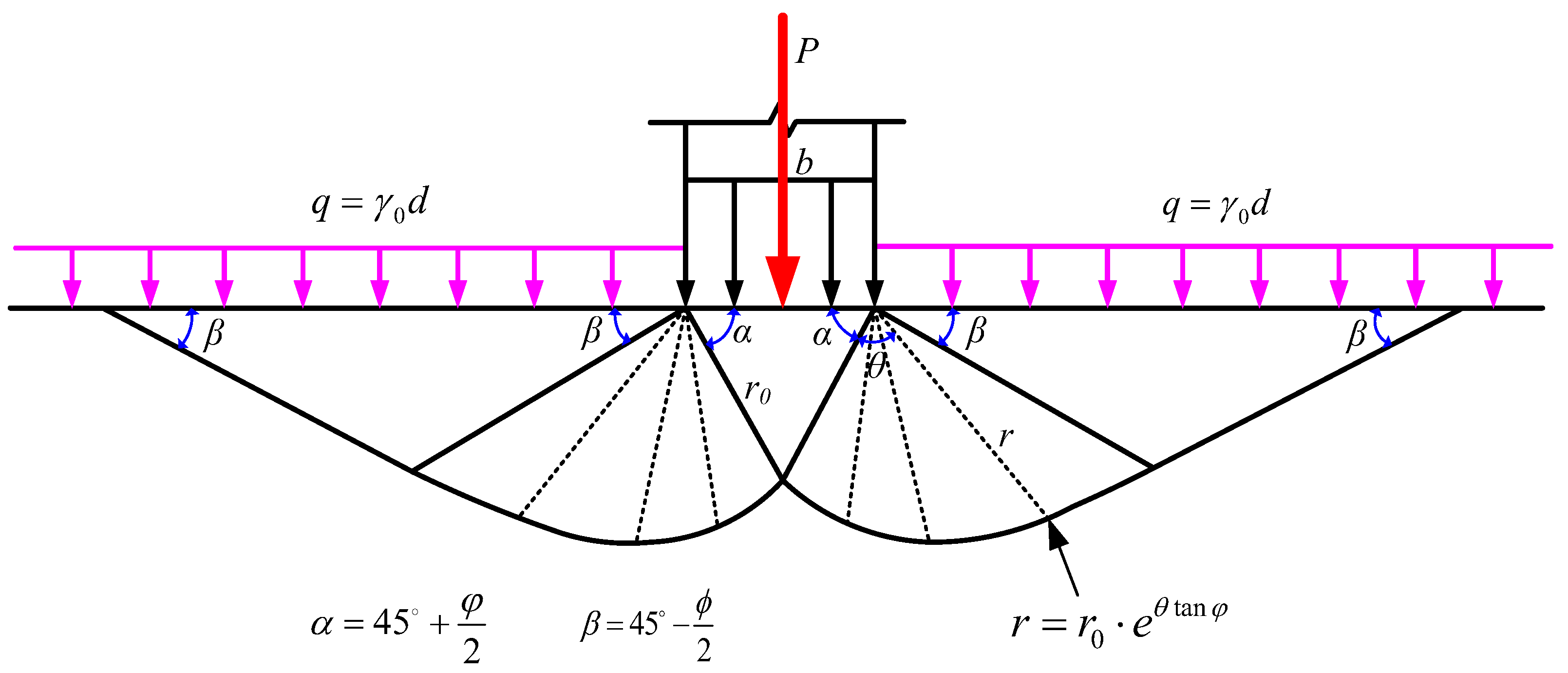
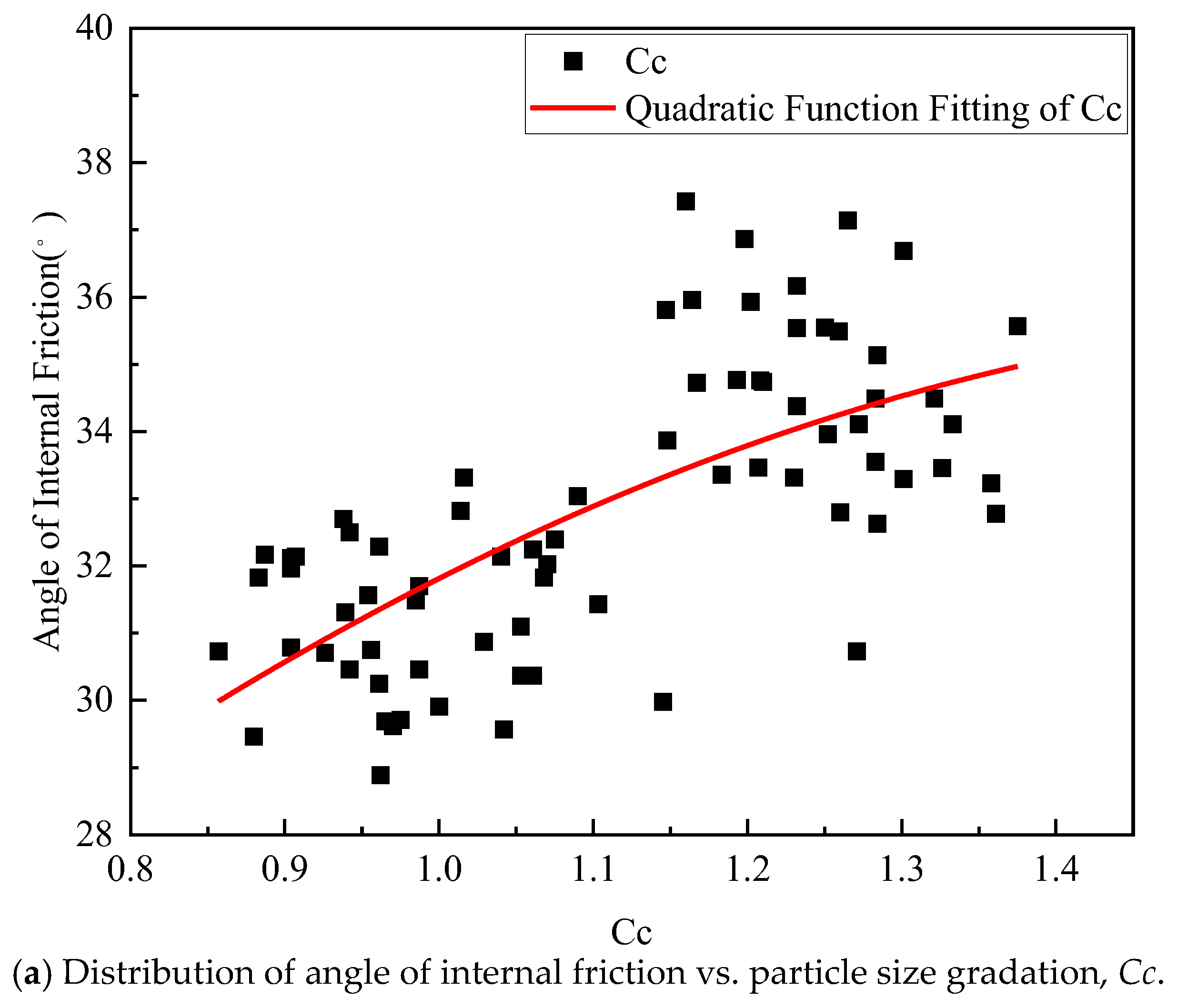
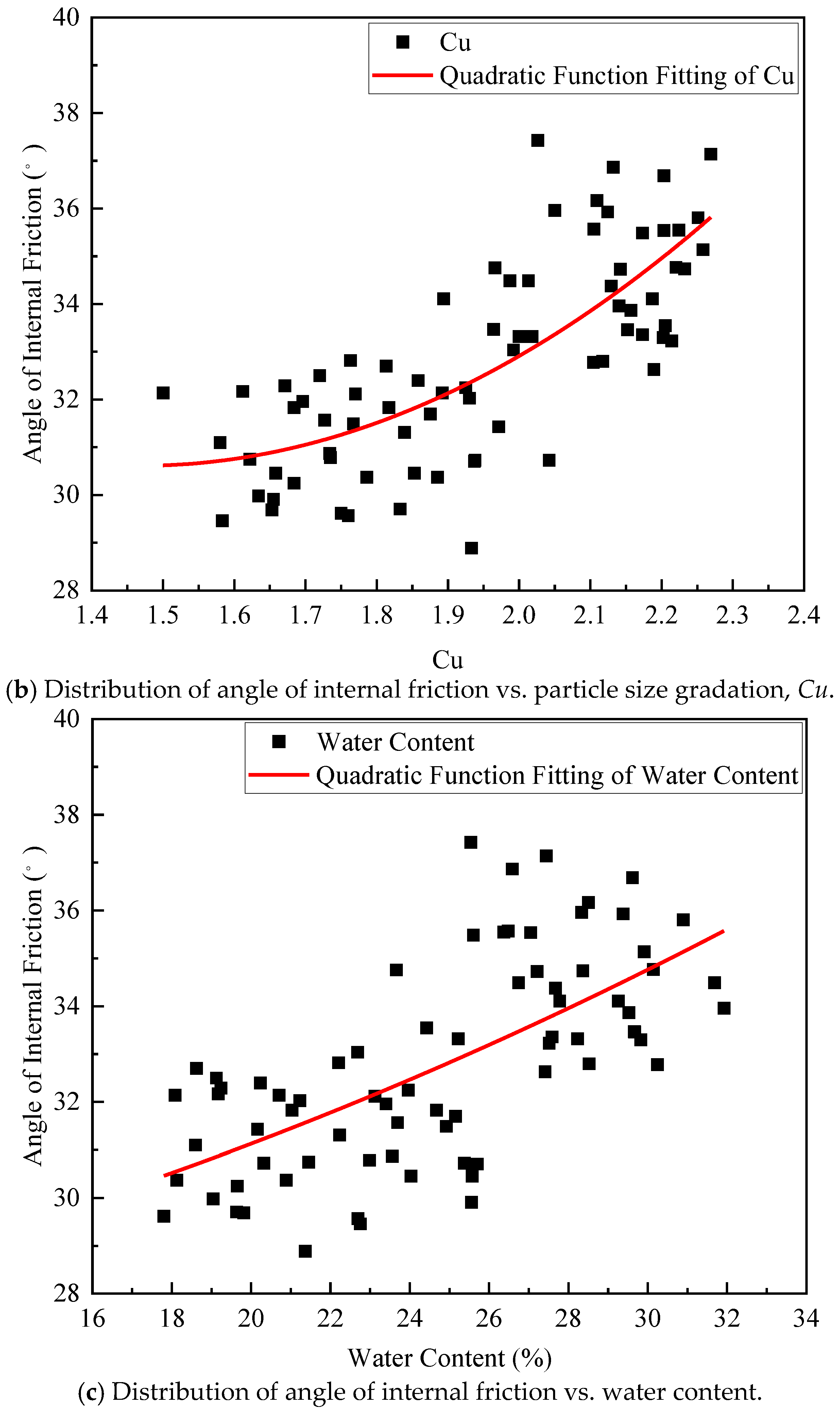
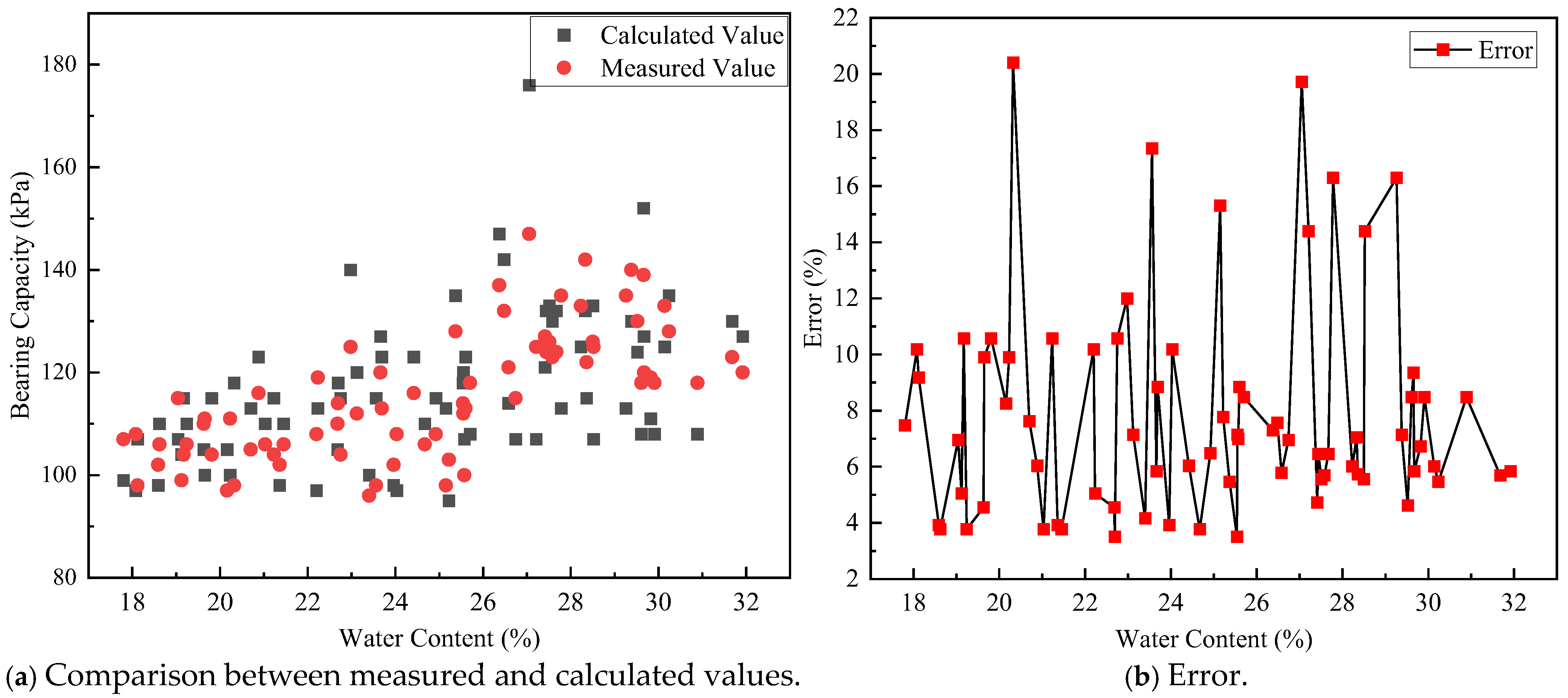
| Model | Hammer Weight | Drop Height | Maximum Penetration Depth | Maximum Depth of Penetration Hammer | Probe Length |
|---|---|---|---|---|---|
| Light Dynamic Penetrometer | 10 kg | 50 cm | 4–6 m | 40 mm | 90 cm |
Disclaimer/Publisher’s Note: The statements, opinions and data contained in all publications are solely those of the individual author(s) and contributor(s) and not of MDPI and/or the editor(s). MDPI and/or the editor(s) disclaim responsibility for any injury to people or property resulting from any ideas, methods, instructions or products referred to in the content. |
© 2025 by the authors. Licensee MDPI, Basel, Switzerland. This article is an open access article distributed under the terms and conditions of the Creative Commons Attribution (CC BY) license (https://creativecommons.org/licenses/by/4.0/).
Share and Cite
Su, L.; Zhang, F.; Peng, C.; Zhang, G.; Qin, L.; Wang, X.; Yang, S.; Peng, W. Study on Physical Properties and Bearing Capacity of Quaternary Residual Sand for Building Foundations: A Case Study of Beaches in Quanzhou, China. Buildings 2025, 15, 3104. https://doi.org/10.3390/buildings15173104
Su L, Zhang F, Peng C, Zhang G, Qin L, Wang X, Yang S, Peng W. Study on Physical Properties and Bearing Capacity of Quaternary Residual Sand for Building Foundations: A Case Study of Beaches in Quanzhou, China. Buildings. 2025; 15(17):3104. https://doi.org/10.3390/buildings15173104
Chicago/Turabian StyleSu, Lin, Feng Zhang, Chuan Peng, Guohua Zhang, Liming Qin, Xiao Wang, Shuqi Yang, and Wenyao Peng. 2025. "Study on Physical Properties and Bearing Capacity of Quaternary Residual Sand for Building Foundations: A Case Study of Beaches in Quanzhou, China" Buildings 15, no. 17: 3104. https://doi.org/10.3390/buildings15173104
APA StyleSu, L., Zhang, F., Peng, C., Zhang, G., Qin, L., Wang, X., Yang, S., & Peng, W. (2025). Study on Physical Properties and Bearing Capacity of Quaternary Residual Sand for Building Foundations: A Case Study of Beaches in Quanzhou, China. Buildings, 15(17), 3104. https://doi.org/10.3390/buildings15173104






